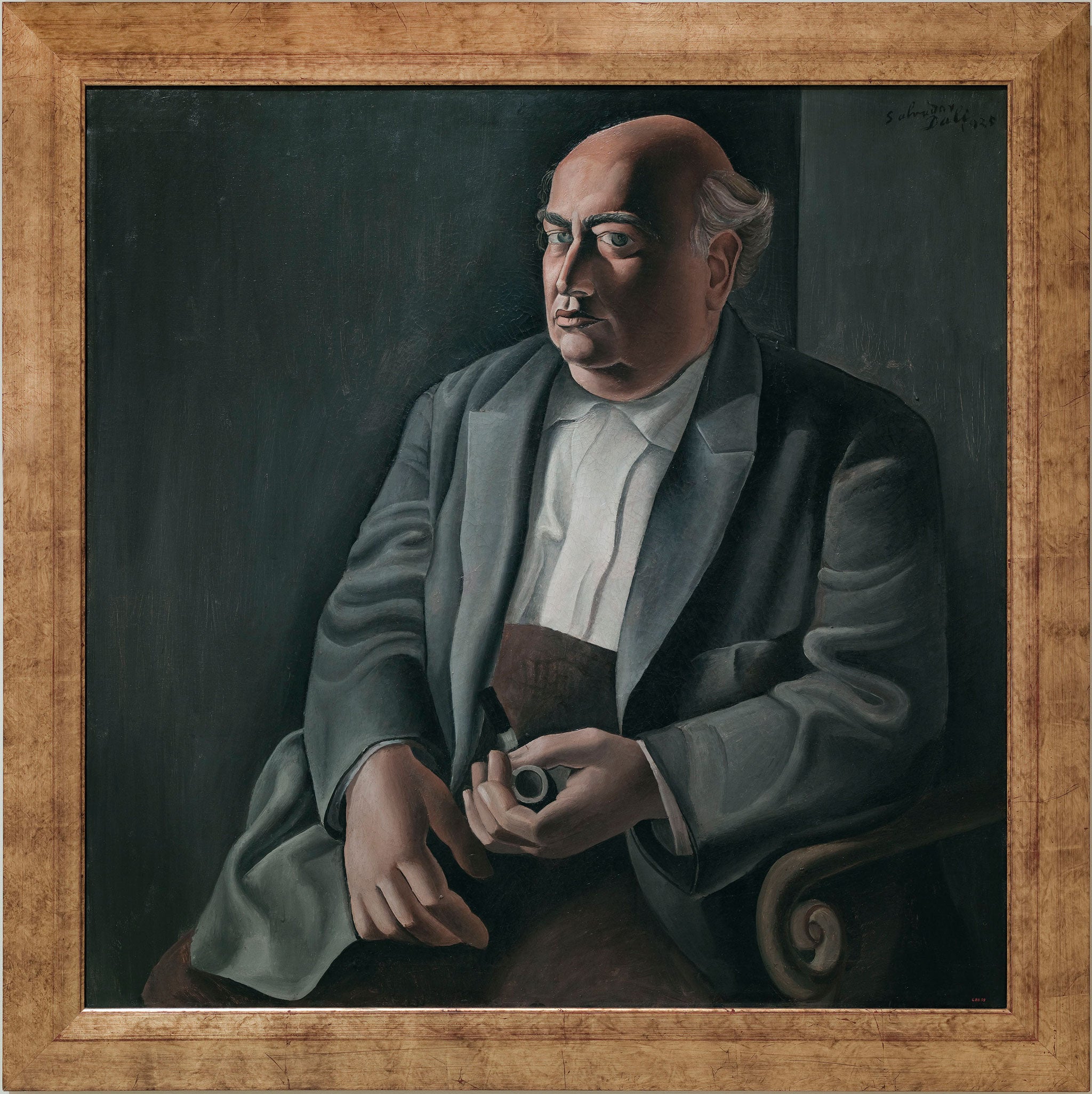Great works: Portrait of My Father, 1925, by Salvador Dali
Museu Nacional d'Art de Catalunya, Barcelona

It is often extremely difficult to like the idea of Salvador Dali, to rid oneself of that ridiculous image of the extravagantly moustachioed wildman. His near hysterical showmanship gets in the way of our careful appreciation of his gifts as a painter. What is more, his plagiarism of himself seems a shoddy trick.
But wait. There was a time in his life when his great talents were beginning to be exercised to the full. Here is one of the fruits of that moment, a stern portrait of his father, painted when he had just been kicked out of the Academy in Madrid for insubordination – he had told his examiners that they were unfit to judge him.
His father, understandably, was furious, but he continued to believe in him, lovingly maintaining a scrapbook of cuttings about his son's achievements. Later on, it would all turn terribly sour, and Dali's images of the father figure would be transformed into monsters.
Here the young painter is absorbing influences from past and present like a sponge. This painting, for example, is one of many examples that we could cite of the new Classicism of the period immediately following the First World War. We think of Picasso and de Chirico, for example. Classicism represented a type of reaching back, grasping for some security. The world had been shaken to its foundations by conflict, and experimentation became too risky. Some artists felt a need to be tethered to the past.
Here we have an almost sculptural solidity of form. The figure, in its bulk and its heft, embodies the idea of authority. It is not easily budged. It reminds us of Ingres' majestic portrait of the newspaper proprietor Monsieur Bertin in its sobriety – it almost edges towards the monochromatic. Both men possess a tremendous sense of physical presence. And yet there is at least one significant difference.
Monsieur Bertin faces us directly. We see Dali's father in a three-quarters view. His eyes swivel to the left, apprehensive, nervous. The young man he is looking back at is untameable. Both sitters almost overbrim their chairs, from which they pronounce upon the world that is at their feet. Dali's father was the notary of his home town of Figueres, a man who could call the shots.
And yet there is intimacy and more than a touch of domesticity in this portrait, too. There is a drawing of Dali's father, dated the same year, with his daughter Ana Maria standing at his back. The poses he strikes in painting and drawing are remarkably similar to each other. And yet, there are also important differences. In the drawing, Dali's father is wearing a three-piece suit. He is smoking a cigar. He wears a buttonhole. It is a portrait of a successful public man at rest. The portrait on this page is less so. This is a portrait of a slightly troubled father cradling a favourite pipe.
The painting was shown in Dali's first solo exhibition in Barcelona, which took place in November 1925. He felt highly of it. He told his friend, the poet Federico Garcia Lorca, that the exhibition had been a success in every way, critically and financially. Dali was never one to hold back when it came to trumpeting his own achievements. That arrogance would part-poison the well of his talent.
About the artist: Salvador Dalí (1904-1989)
International celebrity, Catalan artist Salvador Domingo Felipe Jacinto Dalí i Domènech, 1st Marqués de Dalí de Pubol, provoked furious reactions from the start in the mid-1920s. His free-thinking lawyer and federalist father, was a strict disciplinarian; his mother, who died when he was 16, encouraged him to indulge his passion for painting. At college in Madrid, he began as he would go on, as an English dandy in knee breeches, voluminous moustaches, long hair and sideburns.
Subscribe to Independent Premium to bookmark this article
Want to bookmark your favourite articles and stories to read or reference later? Start your Independent Premium subscription today.

Join our commenting forum
Join thought-provoking conversations, follow other Independent readers and see their replies